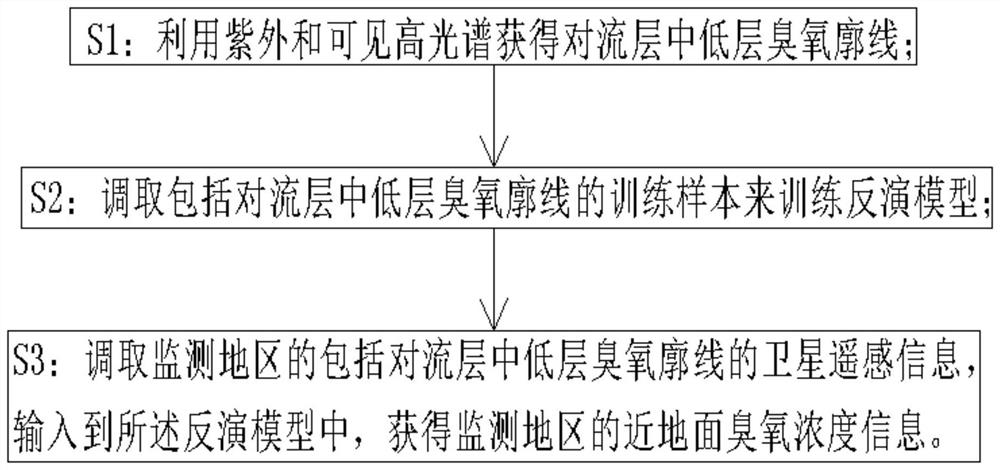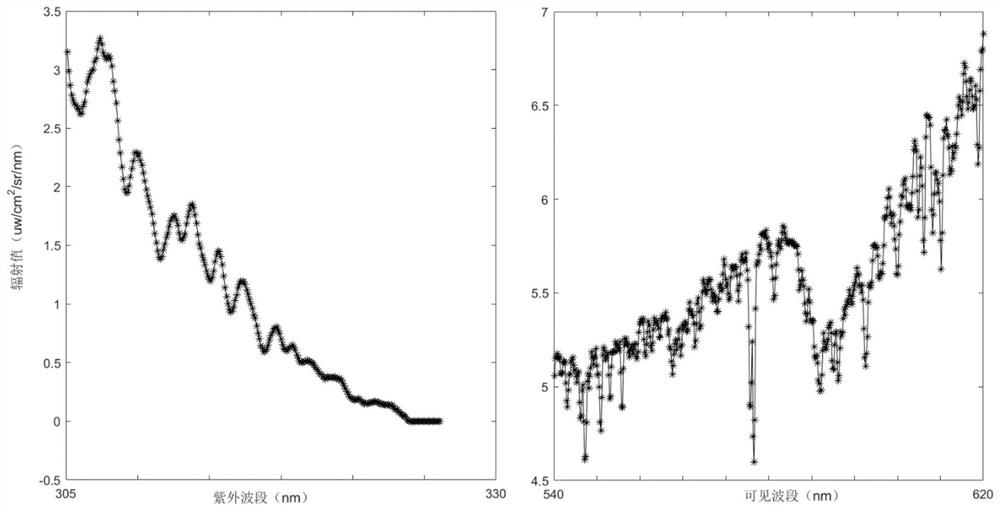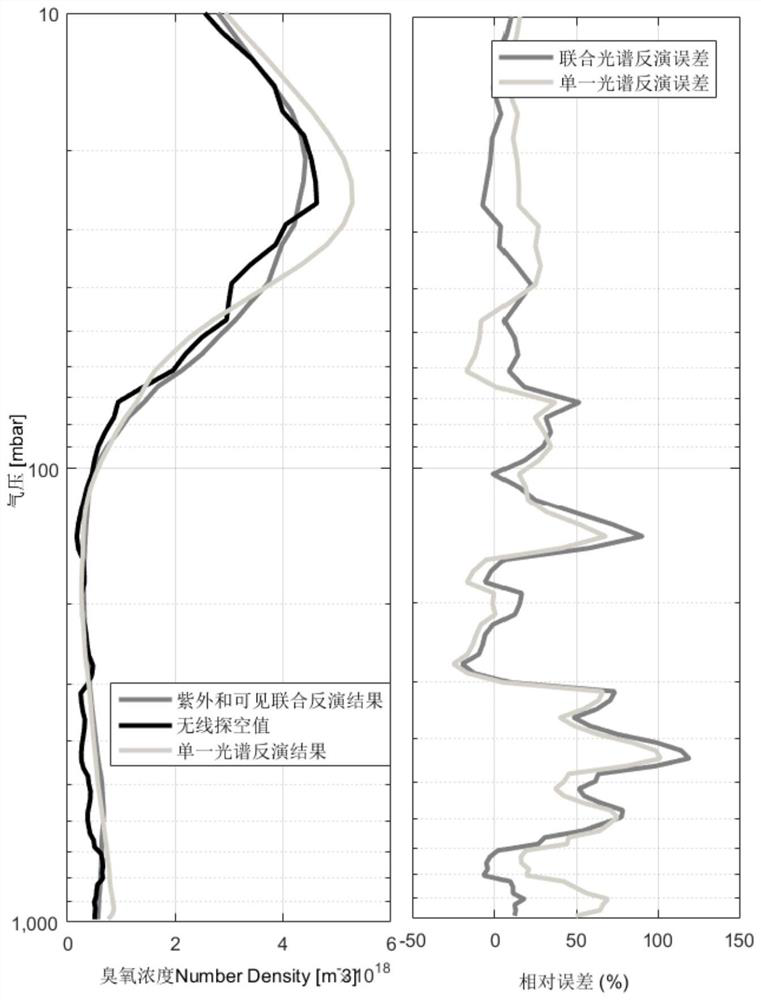Method for acquiring near-surface ozone concentration based on ultraviolet and visible hyperspectrum
An ozone concentration and hyperspectral technology, applied in the field of ozone profile and near-surface ozone concentration inversion, can solve the problems of high sensitivity, low precision of satellite inversion of bottom ozone, etc., and achieve the effect of reducing inversion error
- Summary
- Abstract
- Description
- Claims
- Application Information
AI Technical Summary
Problems solved by technology
Method used
Image
Examples
Embodiment 1
[0158] The ozone profile in the middle and lower layers of the troposphere was retrieved for the area where Hangzhou City is located. The corresponding ultraviolet band spectrum and visible band spectrum of this area are as follows figure 2 As shown in , the inversion method includes the following steps:
[0159] Step 1, establish the correction coefficient calculation formula for spectral correction, namely
[0160] Step 2, retrieve the GF-5 ultraviolet hyperspectral data and GF-5 visible hyperspectral data in this area, and make sensitivity and error constraints on the spectral data, specifically including the following sub-steps:
[0161] Sub-step a, filter out the pixels with too large absorbing aerosol index, that is, filter out the pixels with AAI value greater than 1; where AAI is calculated by the following formula:
[0162] AAI=-100{Log10[(Iλ 1 / Iλ 2 )meas]-Log10[(Iλ 1 / Iλ 2 )calc]}.
[0163] Sub-step b: use the reflectance at 380nm to estimate the effective ...
Embodiment 2
[0181] Train the inversion model:
[0182] Step 1, retrieve training samples from satellite data, the training samples specifically include aod055 data, ERA5 feature data, TROPOMI Level2 feature data, time feature data and near-surface ozone concentration data obtained by ground base stations. Wherein, the tropospheric low-level ozone profile in the TROPOMI Level2 characteristic data utilizes the method in embodiment 1 to obtain;
[0183] Step 2, set up a Wide&Deep neural network, the input data of the Wide neural network part in the Wide&Deep neural network includes basic feature data and combined features
[0184] The input data of the Deep multilayer neural network part in the Wide&Deep neural network includes basic feature data;
[0185] Among them, the basic feature data is converted into features through the following formula (5), and then the combined features are screened out through the gbdt model;
[0186]
[0187] The transfer function in the Wide neural networ...
PUM
 Login to View More
Login to View More Abstract
Description
Claims
Application Information
 Login to View More
Login to View More - R&D
- Intellectual Property
- Life Sciences
- Materials
- Tech Scout
- Unparalleled Data Quality
- Higher Quality Content
- 60% Fewer Hallucinations
Browse by: Latest US Patents, China's latest patents, Technical Efficacy Thesaurus, Application Domain, Technology Topic, Popular Technical Reports.
© 2025 PatSnap. All rights reserved.Legal|Privacy policy|Modern Slavery Act Transparency Statement|Sitemap|About US| Contact US: help@patsnap.com



